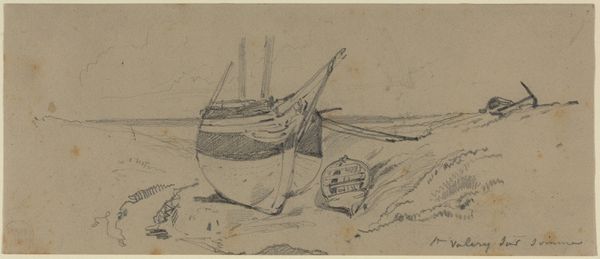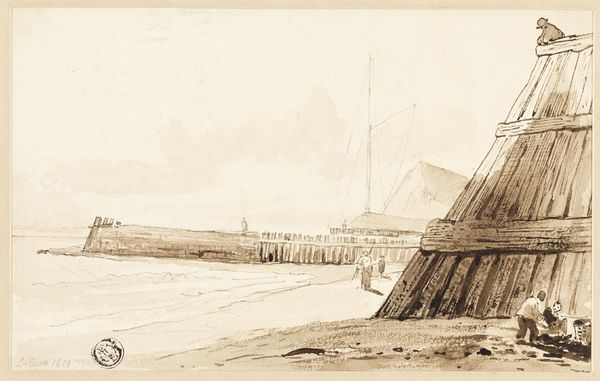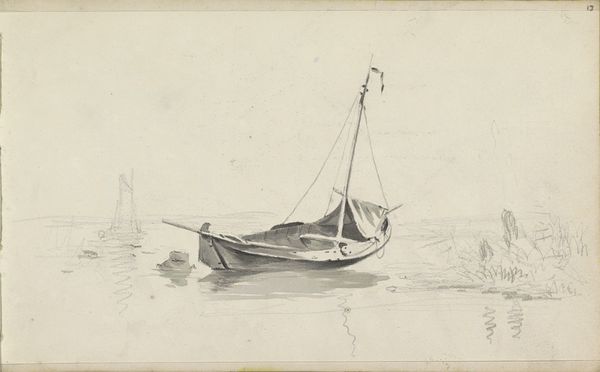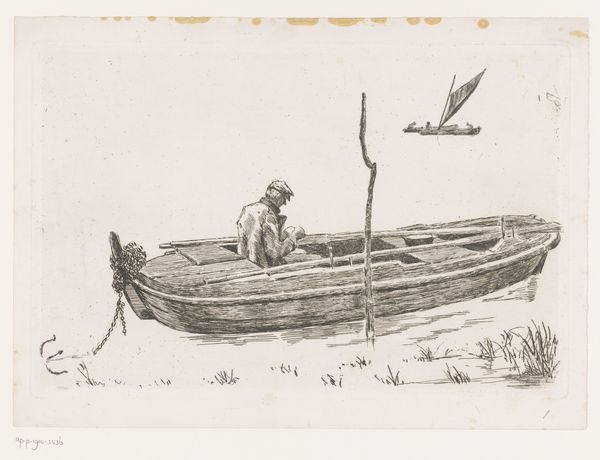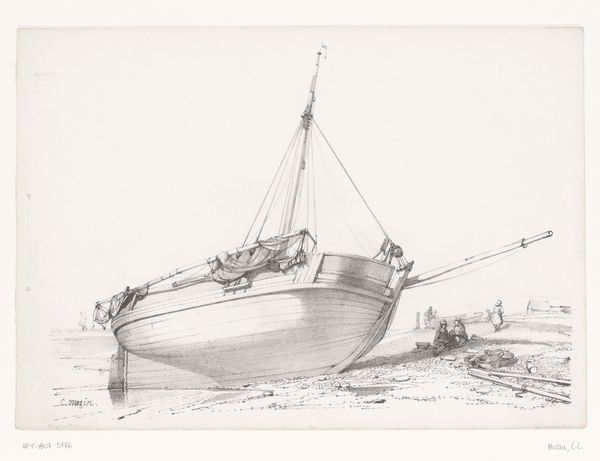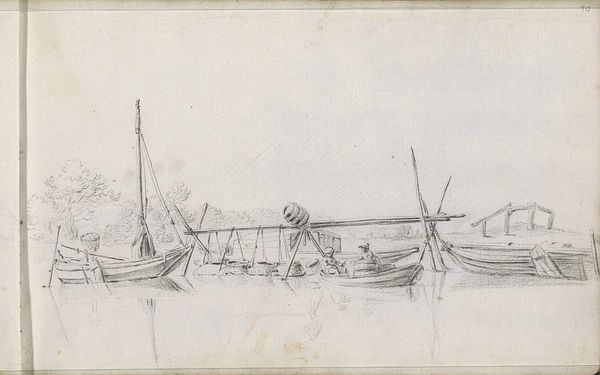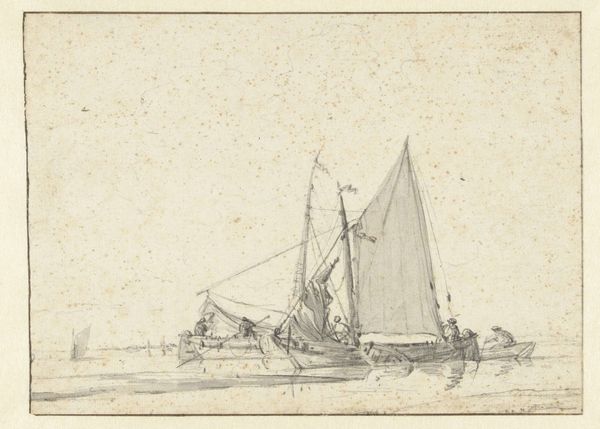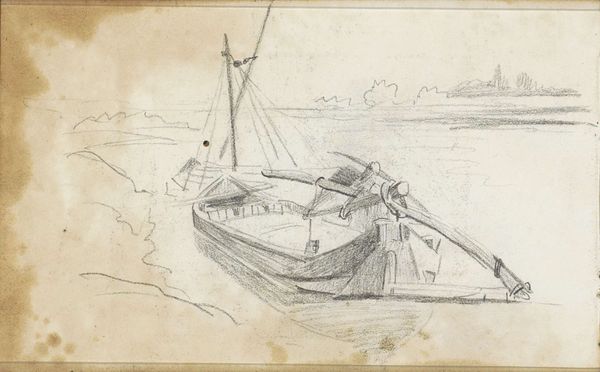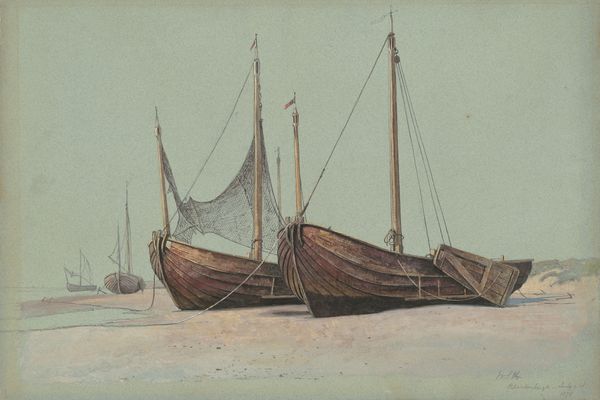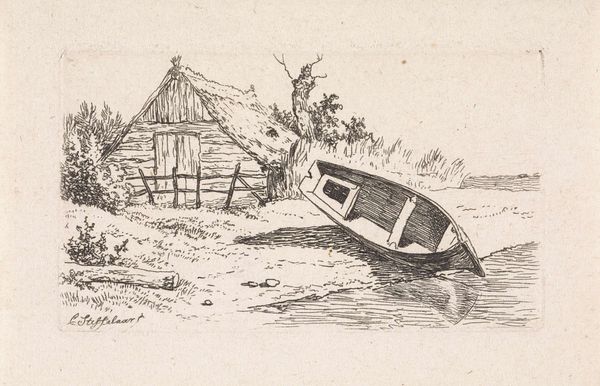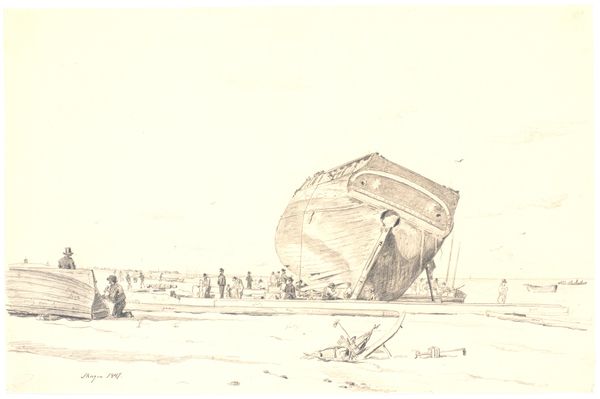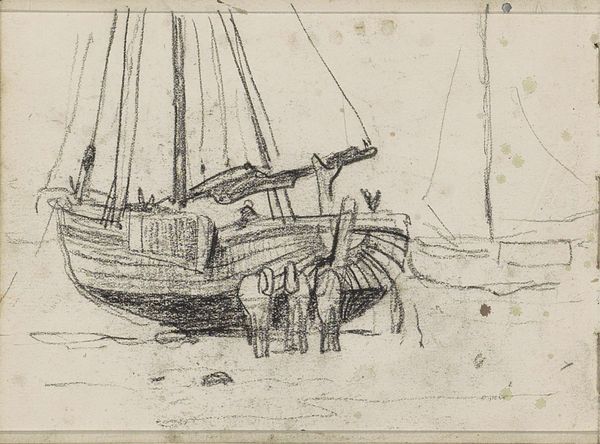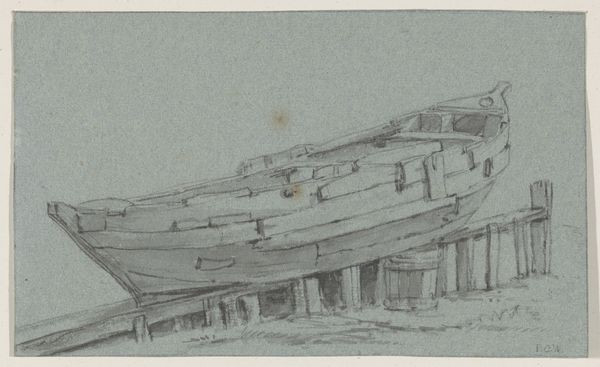
drawing, watercolor
#
drawing
#
landscape
#
charcoal drawing
#
watercolor
#
watercolor
#
realism
Copyright: Rijks Museum: Open Domain
Curator: Let’s discuss Adrianus Eversen’s, View of a Boathouse, thought to have been made somewhere between 1828 and 1897. The artwork combines watercolor and charcoal drawing. Editor: It's subdued, isn’t it? Almost monochromatic. The limited palette really emphasizes the textural details of the boathouse and the surrounding water. It projects a certain...stillness. Curator: Yes, Eversen's choice of materials, watercolor and charcoal, allowed for the swift depiction of light and form; these were relatively inexpensive media. Note the drawing’s implications regarding labor and leisure, and the social context it evokes. This contrasts, shall we say, with the opulence often associated with the fine arts of his period. Editor: The composition guides the eye nicely; the dark tones of the boathouse against the faded grays of what’s beyond—skiffs, sailing masts, the distant city buildings, including what appears to be a domed cathedral. Look at the texture—charcoal blended subtly on that central structure, versus the crisp detail used to portray the grasses in the lower left. Curator: Consider also that Eversen, whilst alive during an age of vast material development, turns to depict an aging boathouse rather than one that is modern or innovative. The boathouse—it has a sort of dilapidated, improvised nature to it. The building has been made through labour, yet we do not see that labor praised by modern society—but rather ignored and left to slowly decline. Editor: I’m interested in how the light is used not for pure naturalism, but perhaps to evoke mood. The light here models form and highlights surfaces in ways that encourage contemplation. What do you make of the semiotic impact? I'm wondering what interpretations it might offer regarding urban existence... Curator: This artistic choice presents us with interesting socio-economic perspectives as the rise of mass consumption increasingly occurred within Europe. We are compelled to appreciate these elements from a humble worker perspective. Editor: So, what emerges is a tension between the detailed, textural surfaces of working life with implications of mortality; this is contrasted against the artist’s technical precision of blending and contour. It’s quite compelling, and has prompted some exciting discussion! Curator: Indeed. Reflecting on it further, I value how the process illuminates Eversen’s worldview.
Comments
No comments
Be the first to comment and join the conversation on the ultimate creative platform.
